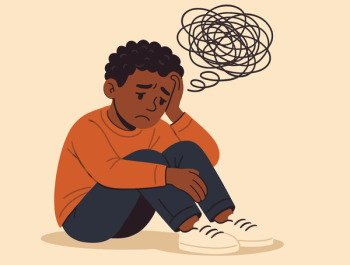
- Psychiatric Times Vol 35 No 2
- Volume 35
- Issue 2
ECT for Self-Injurious Behavior in Autism: A New Indication
ECT has been found effective in mitigating the deleterious consequences of SIB.
Dr. Wachtelis Associate Professor of Psychiatry, Kennedy Krieger Institute, Johns Hopkins School of Medicine, Baltimore, MD; Dr. Kellneris Chief of Electroconvulsive Therapy, New York Community Hospital, Brooklyn, NY; Dr. Fink is Professor Emeritus, Departments of Psychiatry and Neurology, Stony Brook University, Stony Brook, NY.
Since its introduction 8 decades ago, ECT has been a standard treatment for severe affective and psychotic illness, as well as less common indications including catatonia,
SIB is defined as any act toward the self that causes physical injury, and has been recognized for decades to occur among individuals with autism spectrum disorders and intellectual disability. Estimates of SIB prevalence vary widely, with higher rates usually found among those with greater cognitive and communication impairments, and psychiatric and medical comorbidities. Common manifestations of SIB include head banging; hand-to-head, knee-to-head, and hand-to-body hitting; self-pinching; scratching and biting; and body slamming against hard surfaces. The frequency of SIB varies widely, from occasional, to daily, hourly, or even a per-minute basis. Frank bodily injury is common and includes bleeding, bruising, swelling, fracture, infection, disfigurement, traumatic ossification, cataract development, retinal detachment with associated loss of vision, and concussion or intracranial damage. Other deleterious consequences of SIB include reduced social, educational, family, and occupational functioning, with higher risk of placement in more restrictive settings and limited life opportunities.
Standard treatments
Standard treatments of SIB in autism and intellectual disability are behavioral and psychopharmacological interventions. While many individuals respond to these modalities, there has long remained a subgroup of treatment-refractory patients who have exhausted dozens of psychotropic medications, years of intensive behavioral therapy, and multiple out-of-home placements and hospitalizations. Such patients may be padded and immobilized head-to-toe in protective equipment, and frequently receive psychotropic medications as chemical restraint-often with limited benefit and high risk of adverse effects. Despite such efforts, these patients often sustain permanent injuries including blindness from retinal detachment and cerebral hemorrhage.2
Recent suggestions that SIB might be one of many symptoms of catatonia in autism spectrum disorders-including mutism, negativism, posturing, rigidity, and repetitive speech and acts-led to treatment trials with ECT, the long-recognized effective treatment for catatonia, with
Case Vignette
Jay is a 19-year-old man with autism and intellectual disability. He was initially hospitalized at age 12 after several years of severe head- and body-directed SIB with frequent facial bleeding, as well as aggressive behaviors toward his family, caregivers, and school staff. SIBs were so intense that a caregiver inadvertently broke Jay’s arm while attempting to block hand-to-head striking. Jay also displayed mood instability with sobbing and wild laughter, irritability, physical hyperactivity, agitation, and insomnia.
He had exhausted multiple drug trials from all US-available psychotropic classes, as well as years of intensive behavioral services. He demonstrated affective and behavioral improvement of a few months’ duration on lithium carbonate, aripiprazole, and riluzole, but deteriorated again with such behavioral dyscontrol that his parents feared their only option to maintain his safety was placement in a locked residential facility.
A trial of 3 times per week bilateral ECT was initiated. Jay demonstrated dramatic reduction in SIBs after just a few treatments, as well as improved sleep and more stable mood. ECT frequency was gradually reduced while monitoring for recurrence of SIB or mood deterioration; ultimately, a maintenance ECT regimen of every 9 or 10 days was established.
Jay was able to remain at home, where he participated fully and safely in family life with his parents and 2 siblings. He continued in a program emphasizing community-based living and functioning activities, and was able to master skills never thought possible for him before, such as independent grocery shopping from a list, followed by check-out with a debit card and meal preparation.
He tolerates ECT well and is able to go to school without incident after early-morning treatment. He remains on a concomitant regimen of lithium and aripiprazole; SIB is limited to rare incidents of hand-biting with no resultant injuries. Jay has received an estimated 290 sessions of ECT over the past 8 years.
Evidence for ECT
The resolution of SIB with ECT was first documented in a 1982 report of a 25-year-old man with severe mental retardation and head-directed SIB of several years’ duration.4 In 1999, a report presented a 14-year-old boy with mental retardation whose persistent head-banging and self-scratching were alleviated by ECT, which allowed discharge after many months in a restricitve institutional setting.5
The relationship between self-injury, catatonia, and ECT was first questioned in the 2008 case report of an autistic girl with posturing, rigidity, mutism, stupor, grimacing, food refusal, and global skill regression, alternating with bursts of extreme self-injury that led to bilateral traumatic cataract formation and retinal detachment.6 ECT resulted in resolution of catatonic symptoms, as well as nearly complete eradication of SIB, which allowed for vision preservation in one eye.
The following year, the case of an 8-year-old autistic boy with ongoing agitation and stereotyped movements (in the form of nearly 110 SIBs per hour) was reported.7 After treatment with ECT, he averaged only 20 SIBs per hour. It was postulated that his SIB was a manifestation of catatonia.
In 2010,
ECT treatment protocols
ECT for adolescents with autism spectrum disorder and SIB includes standard ECT protocols of general anesthesia with propofol or methohexital, muscle relaxation with succinylcholine, and continuous oxygenation via face mask. Flumazenil, the benzodiazepine reversal agent, may be used at the time of treatment when patients have recently taken these medications.
Moderately suprathreshold stimulus dosing takes into account the lower seizure threshold of younger patients. Seizure adequacy is monitored by the duration and quality of the recorded EEG. The ECT course begins with seizures 3 times per week, until SIB frequency has been markedly reduced; ECT frequency is then gradually reduced over the ensuing weeks, while monitoring for sustained SIB reduction. For these patients, ECT is a procedure analogous to renal dialysis, with frequency of treatment guided by objective symptom evaluation, and the need to optimize the quality of patient and family life.
Conclusion
While the mechanism of the relief of catatonia by ECT is unclear, the neuroendocrine studies of melancholia offer potential clues. Studies of cortisol and thyroid functions in these patients find chemical abnormalities that resolve with repeated ECT, suggesting that seizures normalize the hypothalamic-pituitary-adrenal axis and other endocrine functions. While we know little about the specific neuroendocrine disturbances in autism spectrum disorder or in catatonia, there are likely commonalities in the underlying physiology between these disorders and melancholia. At present, the best understanding of the mechanism of the beneficial effect of ECT in adolescents with SIB is the neuroendocrine explanation developed for melancholia. Additional mechanistic theories are enhanced neurogenesis, angiogenesis, and neuronal connectivity.9
ECT came into widespread use at a time when psychodynamic thinking dominated child and adolescent psychiatry and the application of the somatic therapies was considered anathema. Since the 1990s, this attitude hurdle has been slowly overcome with the realization that some severe childhood and adolescent disorders-notably, melancholia, mania, and catatonia-are safely and effectively relieved by modern ECT procedures. Recognizing SIB in autism spectrum disorder as a form of catatonia has encouraged this application. Indeed, ECT has been documented as nothing short of lifesaving for many children and young adults with autism spectrum disorder who were previously wholly incapacitated by SIB.
References:
1. Wachtel L, Shorter E. Self-injurious behaviour in children: a treatable catatonic syndrome. Aust N Z J Psychiatry. 2013;47:1113-1115.
2. Wachtel L, Dhossche D. ECT for self-injurious behavior. In: Ghaziuddin N, Walter G, eds. Electroconvulsive Therapy in Children and Adolescents. New York: Oxford University Press; 2013:247-280.
3. Fink M. Rediscovering catatonia: the biography of a treatable syndrome. Acta Psychiatr Scand. 2013;127(suppl 441):1-50.
4. Bates WJ, Smeltzer DJ. Electroconvulsive treatment of psychotic self-injurious behavior in a patient with severe mental retardation. Am J Psychiatry. 1982;139:1355-1356.
5. Fink M. Electroshock: Restoring the Mind. Oxford: Oxford University Press; 1999.
6. Wachtel LE, Kahng S, Dhossche DM, et al. ECT for catatonia in an autistic girl. Am J Psychiatry. 2008;165:329-333.
7. Wachtel LE, Contrucci-Kuhn SA, Griffin M, et al. ECT for self-injury in an autistic boy. Eur Child Adolesc Psychiatry. 2009;18:458-463.
8. Wachtel L, Dhossche D. Self-injury in autism as an alternative sign of catatonia. Med Hypotheses. 2010;75:111-114.
9. Fink M. The mechanism of action of ECT. In: Ghaziuddin N, Walter G, eds. Electroconvulsive Therapy in Children and Adolescents. New York: Oxford University Press; 2013:18-28.
10. Fink M, Kellner CH, McCall WV.
Articles in this issue
over 7 years ago
Understanding Sleep Disorders in Older Adultsover 7 years ago
Adjustment Disordersover 7 years ago
Blade Runner 2049: Tears in Rainover 7 years ago
Cultural Perspectives on Migration and Psychopathologyover 7 years ago
We Wroteover 7 years ago
The Wrong Way on a Long and Winding Road: Suicide in the USover 7 years ago
Psychiatry, “Dangerousness,” and the PresidentNewsletter
Receive trusted psychiatric news, expert analysis, and clinical insights — subscribe today to support your practice and your patients.














